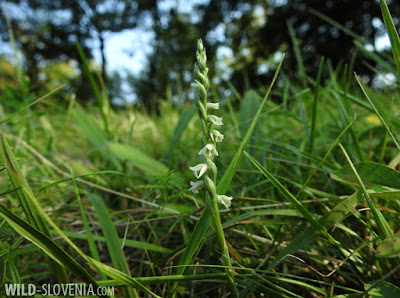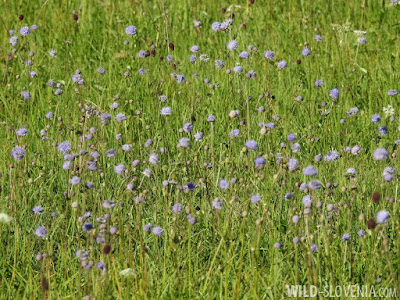Summer is slowly coming to an end. In late August you can feel the season's changing as the scrublands and woodlands are full of migrant birds like Wood Warbler Phylloscopus sibilatrix, Pied Flycatcher Ficedula hypoleuca, Lesser Whitethroat Sylvia curruca, Whinchat Saxicola rubetra and many others. They are all leaving Europe to spend the winter in sub-Saharan Africa. Butterflies at this time of year are having their last peak and can be seen, again, in good numbers and varitey after the mid-summer quiteness. One of the most interesting species we observed recently was the Large Copper Lycaena dispar, a rather localised butterfly in western Slovenia, but commoner in the central and northeastern part of the country. It lives in lowland areas, on wet meadows and low-intensity pastures, where the larval foodplants are various species of dock (Rumex). In our opinion, this is the most striking European butterfly in terms of colour and certainly one of our favourite. We were glad to find at least four Large Coppers, feeding on a patch of flowering mint (Mentha sp.) in the Vipava valley. August is the best time to see them as, by the end of the month, they reach the year's peak of abundance.
The other butterflies and wildlife in the photos below are from various sites around the Karst, as well as the Nanoščica river area, near Postojna.
Large Copper Lycaena dispar, Vipava valley (note mt. Nanos in the first pic's background).
Last pic shows a female, while the others (with bright-orange upperwings) are males.
Purple-edged Copper Lycaena hippothoe, river Nanoščica.
Another attractive butterfly, quite widespread in Slovenia, but never abundant.
Sooty Copper Lycaena tityrus, Vipava valley.
Up to 3 specimens were feeding on the mint, together with several Large Coppers.
Purple Hairstreak Quercusia quercus (Neozephyrus quercus), Sežana.
At the end of August, this butterfly is a common visitor to gardens, feeding on various fruit trees, including figs (above) and plums.
High Brown Fritillary Argynnis adippe, Karst.
Knapweed Fritillary Melitaea phoebe, Nanoščica river.
Spotted Fritillary Melitaea didyma, Nanoščica river.
Woodland Grayling Hipparchia fagi, Karst.
Elephant Hawk-moth Deilephila elpenor (caterpillar), Karst.
Wasp Spider Argiope bruennichi, Karst.
"Liburnian Pink" Dianthus balbisii ssp. liburnicus, Karst.
Autumn Lady's-tresses Spiranthes spiralis, Karst.
The season's last orchid to bloom. We checked a site where last year we had hundreds, but not all were out yet - just about 20 spikes. This species flowers from late August to late September, so we might check the site later in the month.
Autumn Crocus Colchicum autumnale, Karst.
The first emerged a few days ago and will grace the autumn meadows until late October.
Devil's-bit Scabious Succisa pratensis, Nanoščica river.
Variegated Monk's-hood Aconitum variegatum, Nanoščica river.
Willow Gentian Gentiana asclepiadea, Nanoščica river.
Pied Flycatcher Ficedula hypoleuca, Karst.
Whinchat Saxicola rubetra, Karst.
Crag Martin Ptyonoprogne rupestris, Sežana.
In July and August we observed Crag Martins several times in sub-urban habitat in Sežana, including a flock of 5, hunting insects very low above the gardens (above). These birds probably originate from some nearby-breeding colonies, presumably from one of the several quarries in the area. Moreover, a few days ago we discovered a new potential breeding site, under a motorway bridge.

























